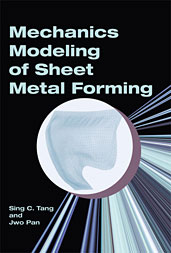Journal Article
Experimental Study of Edge Stretching Limits of DP980IBF Steel in Multistage Forming Process
2015-04-14
2015-01-0525
Automotive structural parts made out of Advanced High Strength Steel (AHSS) are often produced in a multistage forming process using progressive dies or transfer dies. During each forming stage the steel is subjected to work hardening, which affects the formability of the steel in the subsequent forming operation. Edge flanging and in-plane edge stretching operations are forming modes that are typically employed in the last stage of the multistage forming processes. In this study, the multistage forming process was simulated by pre-straining a DP980 steel in a biaxial strain path with various strain levels followed by edge flanging and in-plane edge stretching. The biaxial prestrains were obtained using the Marciniak stretch test and edge flanging and in-plane edge stretching were accomplished by the hole expansion test using a flat punch and a conical punch, respectively.

